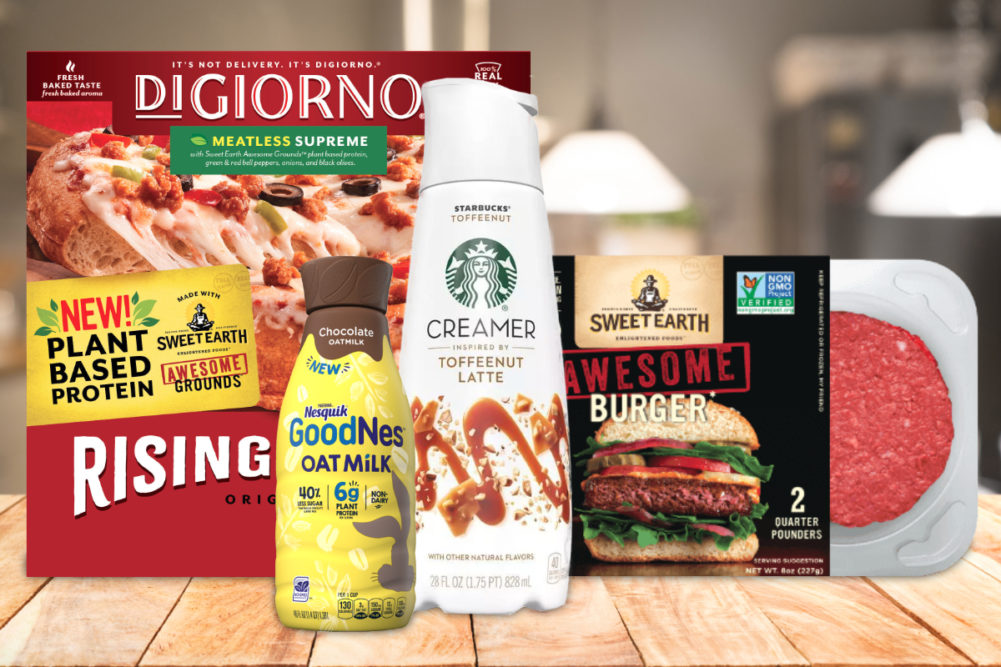VEVEY, SWITZERLAND — Numerous strategic steps by Nestle SA in recent years have focused on expanding the company’s presence in nutritional health products while shrinking the number of product lines it sells that would not be categorized as “better for you.”
Despite acquisitions and divestitures toward these objectives valued in the tens of billions of dollars, Nestle executives are acknowledging that the majority of its food and beverage products still fail to meet recognized standards for healthful foods, according to an article published by The Financial Times. In response to the article, Nestle told the publication it was updating its nutrition and health strategy.
“A presentation circulated among top executives this year, seen by the Financial Times, says only 37% of Nestle’s food and beverages by revenues, excluding products such as pet food and specialized medical nutrition, achieve a rating above 3.5 under Australia’s health star rating system,” The Times said. “This system scores foods out of five stars and is used in research by international groups such as the Access to Nutrition Foundation.”
For beverages alone (excluding plain coffee), The Times said fewer than 5% of Nestle products met the 3.5-star level, and in the case of confectionery and ice cream, only 1%. Additional red flags The Times said were highlighted in the Nestle presentation included the high sodium levels in a DiGiorno pizza variety and Hot Pockets, 40% and 48% of the recommended daily allowances, respectively.
Another European-based system, Nutri-Score, grades food products A to E with an A (green) for healthy products that are recommended and an E (red) for products to be avoided. Using this measure, the Nestle presentation posed a harsh question about the company’s San Pellegrino orange drink, according to The Times — “Should a health-forward brand carry an E (rating)?”
To the degree Nestle, the world’s largest food company, is trying to shed products with an E rating, steps have been taken in recent years. In 2018, The Ferrero Group acquired the US confectionery business of Nestle for about $2.8 billion. In 2020, Nestle sold its US ice cream business to Froneri for $4 billion (though this move was not a complete exit for Nestle since it is a partner in Froneri, a joint venture with PAI Partners).
On the health-facing side, Nestle acquired Wyeth Nutrition in 2012 for $11.9 billion and in 2013 acquired Pamlab, a company focused on medical nutrition. Skincare has been the focus of acquisitions in more recent years. In food and beverages, recent investments have included Chameleon Cold-Brew coffee, Blue Bottle Coffee, Sweet Earth and Freshly.
Among its product lines generally not characterized as “better for you,” Chef America, maker of Hot Pockets, was acquired in 2002, for $2.6 billion, and the Kraft Foods frozen pizza business in 2010 for $3.7 billion.
Certain segments of Nestle’s portfolio scored fairly high.
“Water and dairy products scored better, with 82% of waters and 60% of dairy meeting the threshold,” The Times said.
“We have made significant improvements to our products… (but) our portfolio still underperforms against external definitions of health in a landscape where regulatory pressure and consumer demands are skyrocketing,” the presentation said.
The data excludes baby formula, pet food, coffee and the health science division, which makes foods for people with specific medical conditions. This means the data accounts for about half of Nestle’s 92.6 billion Swiss francs (£72.7 billion) total annual revenues.”
Other Nestle brands include Stouffer’s, Maggi, Buitoni, Lean Cuisine, Häagen-Dazs, Dreyer’s, KitKat, Toll House, Carnation and Coffee-mate.
In response to questions from Food Business News, a Nestle spokesperson said, “Nestle is working on a company-wide project to update its pioneering nutrition and health strategy. We are looking at our entire portfolio across the different phases of people’s lives to ensure our products are helping meet their nutritional needs and supporting a balanced diet. The work on updating our nutrition strategy and future commitments began in January 2021. Nestle will share the outcome of this work on external commitments early next year.”
The company has been working to improve the nutritional footprint of its products, according to the spokesperson. For example, sugars and sodium have been reduced 14% to 15% in products that were not already in line with World Health Organization guidelines.
“In recent years, we have launched thousands of products for kids and families that meet external nutrition yardsticks,” the spokesperson said. “We have also distributed billions of micronutrient doses via our affordable and nutritious products. We have added to our Nestlé Health Science portfolio and launched a wide range of plant-based foods and beverages which is being welcomed by consumers and driving strong growth.
“As we consider our future nutrition strategy, we are first focusing on assessing the part our food and beverage portfolio that can be measured against external nutrition profiling systems. The portfolio analysis only covers about half our sales, since infant nutrition, specialized nutrition, pet food and coffee were not included. Therefore, looking at our portfolio as a whole, less than 30% would not meet stringent external “healthfulness” standards, mostly representing indulgent products such as chocolate and ice cream.
“We believe that a healthy diet means finding a balance between well-being and enjoyment. This includes having some space for indulgent foods, consumed in moderation.”





